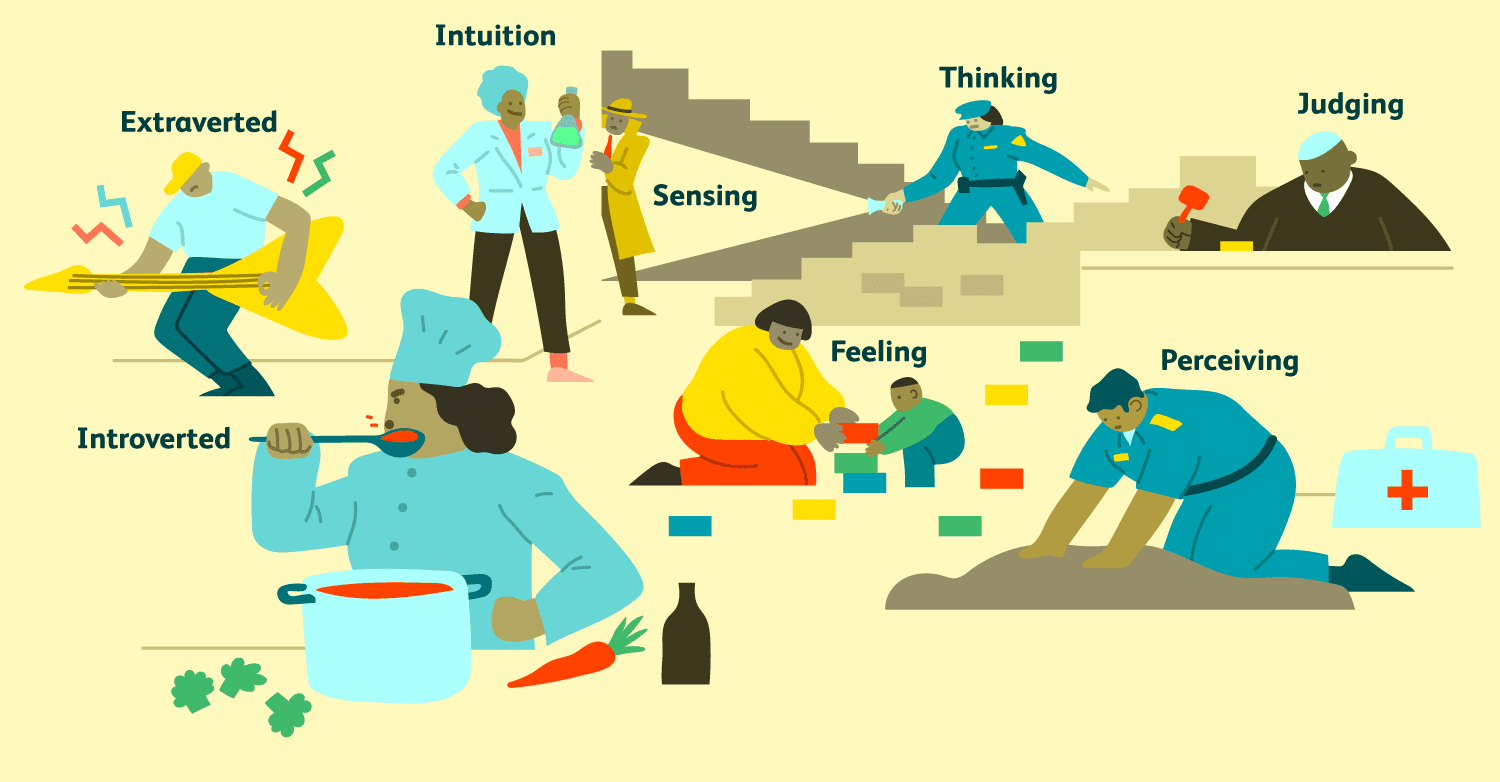
FAQ About Myers-Briggs Personality Type Test

How does the Myers-Briggs test relate to other personality theories, like the Big Five?
The Myers-Briggs Type Indicator (MBTI) and the Big Five are two different models that aim to describe and categorize personality traits. While they share some similarities, they have distinct approaches and conceptualizations of personality.
Here are some key points regarding the relationship between the MBTI and the Big Five:
- Structure: The MBTI is based on Carl Jung's theory and organizes personality into four dimensions: extraversion/introversion (E/I), sensing/intuition (S/N), thinking/feeling (T/F), and judging/perceiving (J/P). These dimensions are dichotomous, resulting in 16 possible personality types. In contrast, the Big Five, also known as the Five-Factor Model, proposes five broad dimensions: extraversion, neuroticism, openness to experience, agreeableness, and conscientiousness. These dimensions are continuous, with individuals falling on a spectrum for each trait.
- Coverage: The MBTI focuses on specific dimensions related to preferences, cognitive processes, and information processing styles. It provides insights into how individuals perceive and interact with the world. In contrast, the Big Five aims to capture a broader range of personality traits, including emotional stability, social behavior, and conscientiousness.
- Empirical Support: The Big Five has accumulated substantial empirical evidence and is widely accepted in the field of personality psychology. It is supported by extensive research demonstrating its cross-cultural validity and predictive power across various domains. The MBTI, on the other hand, has received criticism for its limited empirical support and has faced challenges regarding its psychometric properties and theoretical foundations.
- Flexibility vs. Stability: The MBTI suggests that individuals have fixed preferences across its four dimensions, resulting in a fixed personality type. In contrast, the Big Five portrays personality traits as relatively stable, but they can be influenced and modified by various factors such as life experiences, age, and personal development.
- Compatibility: While there is some overlap between the MBTI dimensions and the Big Five traits, they do not map perfectly onto each other. Attempts have been made to align the MBTI with the Big Five by mapping MBTI types onto the Big Five traits, but these mappings are not universally agreed upon.
